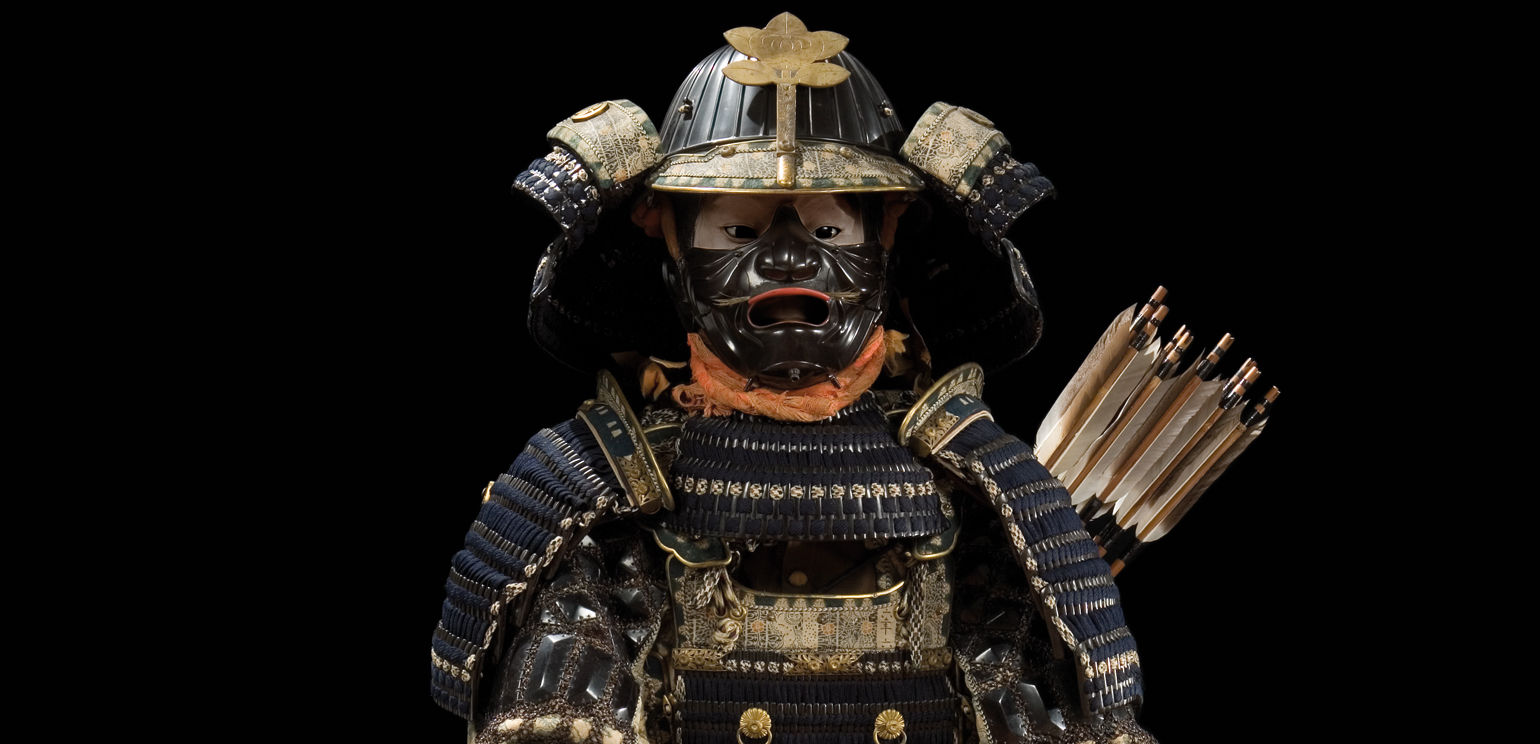
Samurai: The Way of the Warrior
Saturday, Oct 24, 2015 — Sunday, Jan 03, 2016
Drawing from the rich and varied Japanese collection of the Stibbert Museum in Florence, Italy, and organized by Contemporanea Progetti in collaboration with the Stibbert, this evocative exhibition featured some 100 objects related to the legendary samurai warriors — full suits of armor, helmets, swords, sword-hilts and saddles as well as objects intended for more personal use such as lacquered calligraphy boxes, incense trays and foldable chairs that characterize the period in which Japan was ruled by the samurai military class.
Frederick Stibbert (1838 – 1906) was one of the first European collectors of Japanese art, and donated his collection of Japanese armor and arms to the city of Florence. Curator Francesco Civita, of the Stibbert, writes, "The Japanese sword can be considered a key to the study of the history, traditions, and customs of Japan .... Because of its various parts and fittings, called kodogu in Japanese, which immortalize heroic figures, gods, mythological events, heraldic symbols, animals and objects of daily use, the sword is also an anthropological tool, providing information of considerable importance." The exhibition includes about 20 swords as well as 20 separate sword guards, equally elaborately decorated. Helmets feature adornments made to resemble Shinto spirits and demons, and full suits of armor are colorful and complex, with lacquer-accented metal plates and silk ribbons.
Samurai translates as "those who serve," and their job was to protect wealthy landowners. Their code was known as bushido, or the way of the warrior, and focused on discipline, honor and loyalty. The samurai were highly involved in the Japanese government and rose to power in the 12th century as a military dictatorship known as the shogunate. They would rule until Japan was opened to the outside world in the late 1850s.
Curator
Francesco Civita, Stibbert Museum
Sponsors
The Japan Foundation, New York; TD Automotive Compressor Georgia, LLC; the W. Newton Morris Charitable Foundation and the Friends of the Georgia Museum of Art